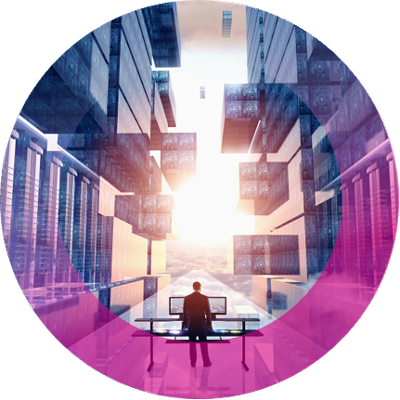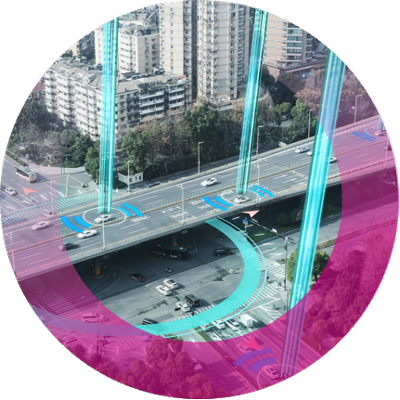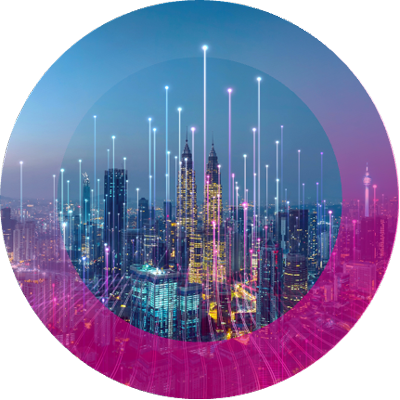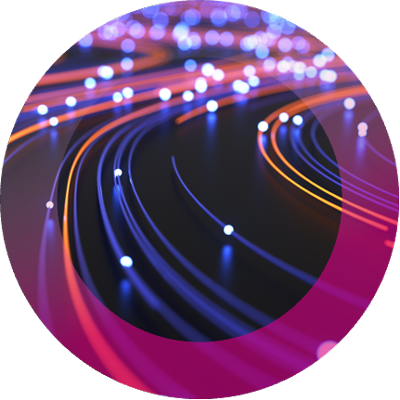Technology Vision
Fujitsu Technology and Service Vision 2022
Fujitsu Technology and Service Vision 2022 provides insight into how CEOs and other business leaders can achieve sustainability transformation through digital innovation.
What kind of future can we envision of a sustainable world made possible through technology innovation? Here we present four visions on how the future of digital technology will make the world more sustainable.
These four visions are based on the keys to success for Sustainability Transformation and derived from Fujitsu Technology and Service Vision 2021.
Our real world scenarios show where the future of digital technology is heading over the next 10 years. We also set out how Fujitsu can deliver change that matters to help organizations transform their business processes based on five key technology areas.
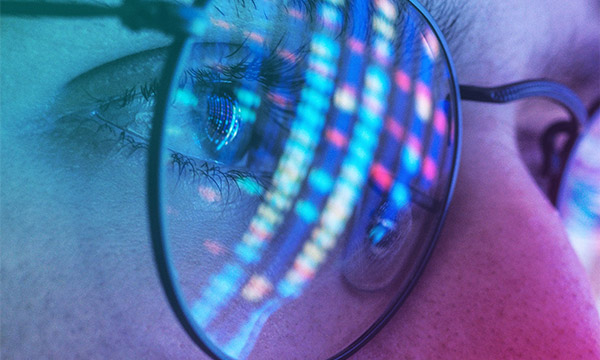
A sustainable future
Innovation is key to solving our most pressing environmental, social and economic challenges, helping us envision a very different future 10 years from now.
We believe that the three key elements that will create a more sustainable world are Human Centric, Data Driven and Connected. In a networked society, where physical and digital worlds converge, technology can empower people to create continuous innovation.
In this module, we will introduce the four future visions that will drive the next 10 years, based on these three elements. These are extensions of the vision presented in FT&SV 2021.
3 key elements for a more sustainable world
- Human CentricEveryone can maximize their potential with dignity.
- Data DrivenData intelligence increases resilience and generates innovation
- ConnectedAn ecosystem connecting people, things and services safely and securely.
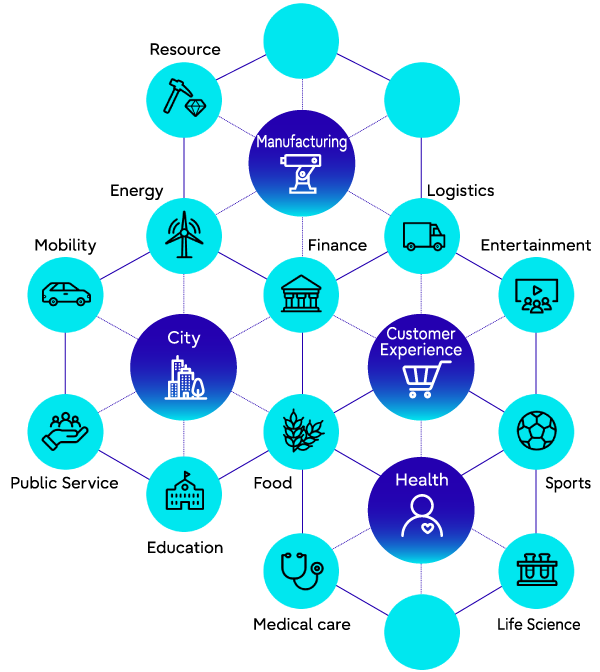
Here are the four future visions that will drive the next 10 years.
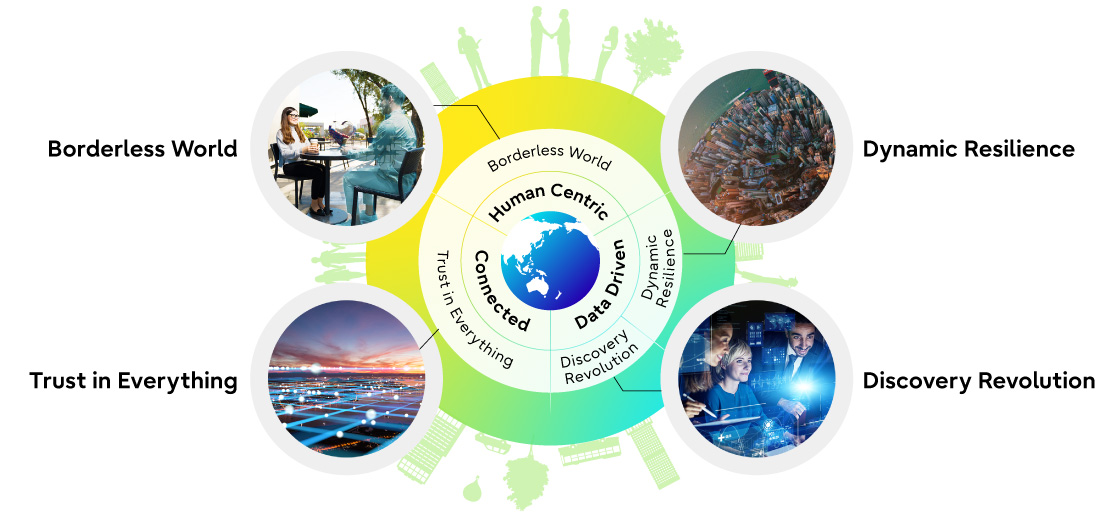
Physical and digital experiences will converge to realize human centric experiences, empowering people to live fuller lives.
Uncertain future scenarios will be digitally rehearsed to build resilience across business and society.
Innovation will be accelerated by using data to combine the creativity of people and technology.
Distributed trust will connect people, things and services safely and securely, supporting a more regenerative society.
1. Borderless World
How can we ensure that everyone can live with dignity? How can we overcome the constraints of our physical condition, age, where we live and our economic situation to maximize our individual potential? How can technology help us achieve this?
We can choose the future we want. Do we want to live in a divided world or an open, borderless world where people are empowered?
We believe that creating an open, borderless world is the real purpose of innovation driven by emerging technologies.
Over the next 10 years, we envision a future where physical and digital experiences will become increasingly merged to empower people both at home and in their working lives.

Physical and digital convergence
The Internet has transformed how people and organizations share information and communicate. In recent years, the Internet has evolved in two pathways.
One pathway enables us all to enjoy better digital experiences, exploiting mobile, photos, video, social media and e-commerce. Online and offline experiences have converged, and the metaverse, an immersive experience in new digital spaces using VR, is expanding rapidly.
The second pathway is the evolution of Internet of Things (IoT), using sensor data to monitor and control the physical world. This is enabling the development of advanced digital twins in various fields, including smart factories.
Evolution of digital experience
Online merges with offline. The metaverse, where people can immerse themselves freely with avatars, is expanding rapidly.
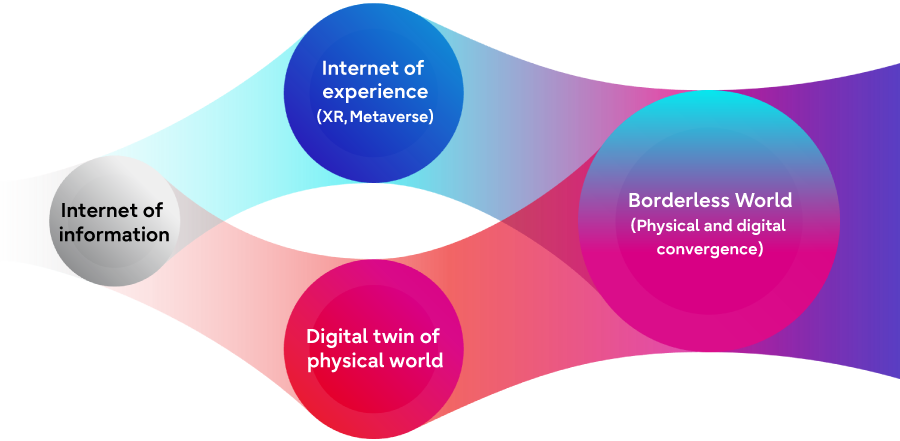
Evolution to controlling the physical world
Cyber-Physical Systems (CPS) continue to advance, using sensor data to visualize and optimally control various activities, from smart factory operations to the dynamics of urban roads and public transport.
Convergence of two worlds
The physical world can be reproduced in a digital world, enabling innovative experiences. From the digital world, people will be able to do work in the physical world, for example, such as plant operations, construction, logistics, medical care and space operations, using robotics and other technologies.
Over the next 10 years, these two parallel evolutions will converge into one, creating a borderless world in which physical and digital are fully integrated. People will be empowered by intelligent services supporting the whole cycle of their lives, from healthcare and mobility through to education and shopping. Governance regulations and rules will be needed to integrate the physical and the digital worlds effectively.
Human-centric network
Intelligent, ultra-fast networks are the foundation of the borderless world, seamlessly connecting the physical and digital environments. These networks support the ecosystems that connect people and services, enabling human-centric experiences. In order to realize a digital experience with realistic resolution, we need mobile radio technology with high capacity, ultra-low latency and multiple connections exceeding the current capacity of 5G. Research and development of 6G technology will accelerate rapidly towards its targeted launch in 2030. End-to-end flexibility and reliability are also required across edges and backbone networks to realize this vision.
Fujitsu is building the networks of the future, from 5G and 6G wireless networks to optical backbone networks. We have already introduced a completely new cloud-native 5G base station based on open standards. Virtualization dramatically reduces the carbon footprint by flexibly changing and streamlining operational resources in response to changing traffic volumes over time and locations. In addition, our quantum-inspired, AI and security technologies are being applied to enable autonomous optimization and create resilient networks.
We are also working with partners to realize photonics-electronics convergence technology towards 2030. This technology will converge photonic and electronic signaling in the end-to-end computing and networking infrastructure, reducing energy consumption significantly. We continue to contribute to developing technology infrastructure that will support a more sustainable society in the future.
Empowering people
Future of work
The pandemic accelerated remote working. Now hybrid working is becoming a new norm. But it is still difficult for workers at factories and construction sites to work remotely. In the future the physical and digital worlds will converge, connected by ultra-high-speed, low-latency networks. This will enable engineering work and on-site operations to be carried out remotely. For example, Fujitsu is enabling the remote operation of construction equipment using a private 5G network, helping to address the shortage of skilled people in the industry.
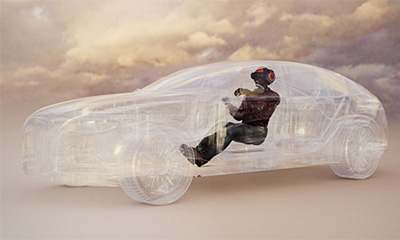
Innovative experiences
How will our cities and everyday lives change in the future? We have the opportunity to realize new empowered experiences from physical and digital convergence. For example, we can already explore a different type of metaverse that exactly reproduces a real town as a digital twin. People can enjoy shopping, tourism and various events, buying real items in the digital space and socializing with real residents. What will happen over the next 10 years? Now is the time to explore the exciting possibilities.
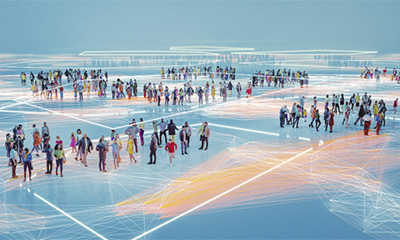
Living with dignity
People with physical disabilities and the elderly may have difficulty in going out, sometimes requiring support from others. Meanwhile jobs for an aging population are increasingly limited, making it hard to find fulfilling work without the necessary expertise. Yet in a borderless world, anyone can realize their potential in a virtual space. For example, by using remote robotics to see the physical world or by using technology to pursue advanced education. To enable everyone to live with dignity, we need to explore new ways to use technology.
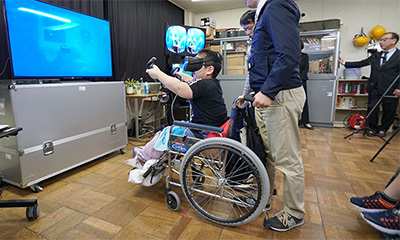
2. Dynamic Resilience
Human society has survived by using the power of prediction to deal with uncertainty. We are able to respond to major risks, such as famine and natural disasters, by understanding physical world conditions, learning from experience and predicting the future. However, our ability to respond has reached its limits.
We live in an increasingly complex and unpredictable world. How do we deal with pandemics, severe natural disasters or geopolitical disruption? Traditional forecasting techniques, with planning based on historical data, have become powerless.
To respond to uncertainty, the concept of rehearsing the impact of unforeseen situations using digital twin technology is becoming mainstream. By using real-time data to identify signals of potential problems, this technology will enable us to quickly allocate resources either to prevent problems occurring or at least to mitigate their impact.

Digital rehearsal
Digital technology can expand our ability to understand the world and predict what might happen in the future. The evolution of the Internet of Things (IoT) over the past 10 years has made it possible to monitor data from a variety of sensors, visualizing real-time conditions in a dashboard as digital twins. In certain domains, this technology is already helping us to control the physical world dynamically. For example, in smart factories, data analysis is used to predict equipment failures, while supply chain inventory and production lines can be adjusted in real time to respond to changes in demand.
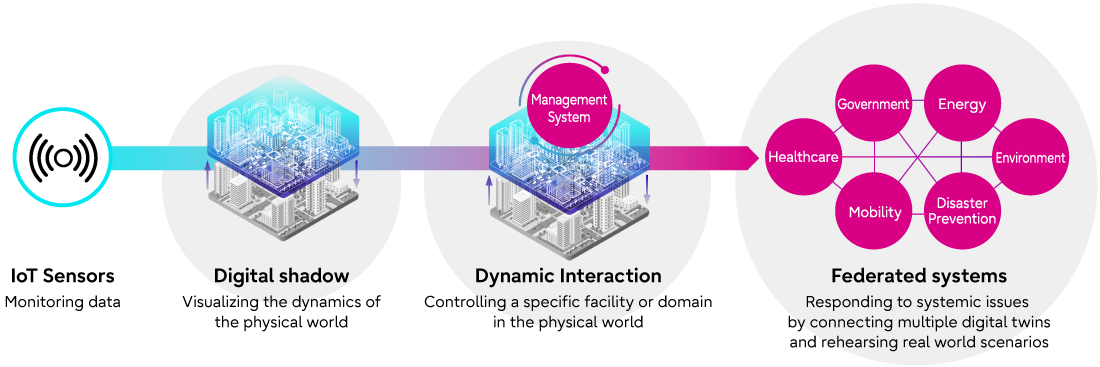
Over the next 10 years, we expect that multiple digital twins, developed separately in areas such as urban mobility, energy, environment, disaster prevention and healthcare, will be connected, with underlying data mutually linked. We will then be able to rehearse complex scenarios in a digital space, for example how urban transport and energy supplies will be affected in the event of a large-scale disaster. This enables us to prepare a response to systemic risks, and to generate prompt and appropriate actions. Digital twin technology will also help us simulate climate change impacts and respond to future pandemics.
Digital x humanities and social sciencesConverging Technologies
Modelling people’s increasingly diverse and fluid lifestyles and behaviors with precision presents a major challenge. To do this, we need to combine the data analysis capabilities of digital technology with human-centric insights cultivated by the humanities and social sciences. Fujitsu calls this converging technologies.
By combining ultra-large-scale, real-time digital twins with computing models of behavioral science, we can create social digital twins that digitally rehearse complex urban and social dynamics. Fujitsu is currently pioneering this exciting new approach. We are already providing a digital twin platform that can process data from millions of connected cars in real time. We are also conducting joint research with partners such as Carnegie Mellon University and participating in the UK’s National Digital Twin Programme.
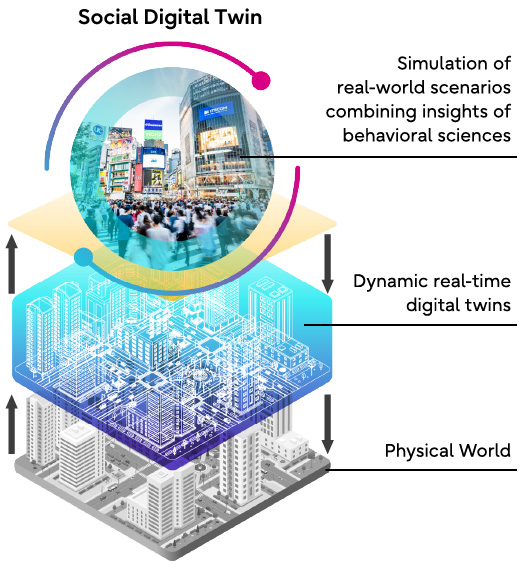
One of the major obstacles to progress in resolving complex environmental and social challenges is the diversity of stakeholders. The social digital twin will help all stakeholders, including policymakers, businesses and citizens, to transparently understand where we are today and what will happen if we do not change our behaviors. In addition, the social digital twin can also simulate the different futures possible if we do change our behaviors. In this way, the social digital twin will provide a platform that allows all stakeholders to openly discuss which policy options are most beneficial and most closely aligned to the common good of society.
Building resilience
Resilient cities
What can we do to make our cities more sustainable and more resilient? The social digital twin will help us to digitally rehearse how many drivers will opt to use alternative public transport if the authorities dynamically change road pricing and public transport fares. We can also use this approach to influence the behaviors of drivers, for example by allowing them to understand how much CO₂ emissions can be reduced.
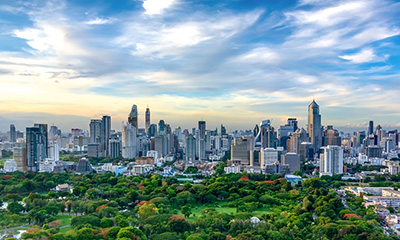
Mitigating disaster impact
The social digital twin will help us to digitally rehearse what could happen in the event of disasters. For example, Fujitsu has worked with academic institutions to simulate the impact of tsunamis with high precision using the supercomputer Fugaku. We have also developed an easy-to-use prediction application for smartphones, ensuring people can evacuate more quickly and safely in the case of tsunami alerts.
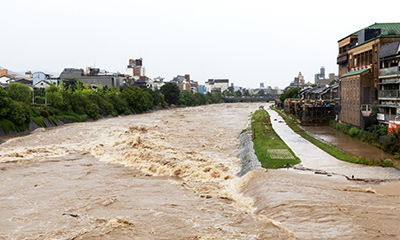
Resilient business
In the face of unexpected pandemics and geopolitical uncertainty, a single optimal global production model is no longer viable. The key to management strategy is balancing efficiency in normal times with resilience in the event of an emergency. What kind of data will be required to do this? How can we digitally rehearse future scenarios and how quickly can we execute Plan B and Plan C by sensing data in real time?

3. Discovery Revolution
Innovation generated by new knowledge continues to drive social and economic progress. At the same time, the impact of this progress on the global environment has become a major challenge. We need to accelerate innovation to solve the problems we have created.
It often takes years of experiments in labs and in the field to discover new knowledge and generate innovation. Now, however, innovation timescales can be shortened from years to months – or even days. This is being achieved by exploiting ever-increasing computing power to enable ultra-high-speed simulation and next-generation AI technology to formulate hypotheses and infer causalities.
In a borderless world, creative collaboration between people and technology will continue to accelerate innovation.
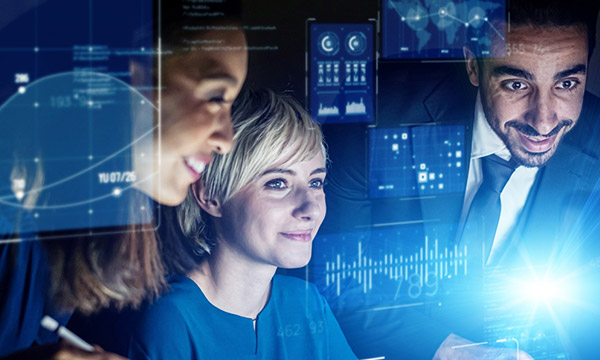
Computing as a Service
Computing power continues to evolve beyond Moore's Law. Quantum computers are expected to be in practical use by around 2030. Quantum computers can process significantly larger data sets than conventional computers for certain types of problems and solve complex problems such as quantum dynamics calculations with a very high speed. In contrast, conventional high-performance computing (HPC) can perform a very wide range of applications. How can we make such ultra-scale computing power more widely available to research institutions and businesses?
Megatrends over the next 10 years include the democratization of ultra-scale computing power. The computing power of HPC, quantum-inspired computers, and quantum computers will be delivered as a service through the cloud. These different types of computing resources will be automatically identified and optimized for different types of workloads. This will enable researchers and organizations to perform complex optimization calibrations and simulations as well as large-scale machine learning with high speed and convenience. This will dramatically accelerate innovation across a wide range of fields, from drug discovery and new material development through to engineering.
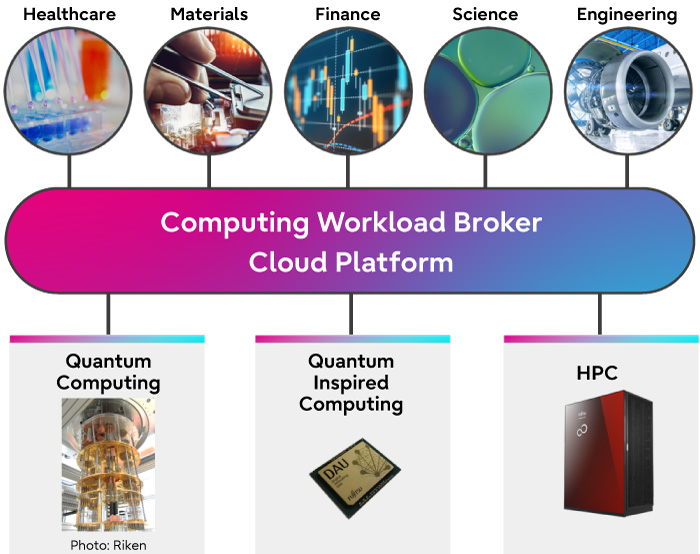
Fujitsu is actively engaged in joint research into quantum technology with various academic research institutes and partners, including the joint development of a superconductive quantum computer with RIKEN. We have also developed the world's fastest 36 qubit quantum simulator running on an HPC infrastructure. We are now working with partners to develop practical applications that exploit the superpower of quantum technology.
Creativity of people and technology
Since 2012, we have seen a significant advance in the accuracy of recognition by deep learning technology. This new technology has brought rapid evolution of AI technology in computer vision and natural language processing. What further breakthroughs are we expecting in AI over the next 10 years?
Deep learning technology has the advantage of quickly finding correlations between vast amounts of data. However, inferring causal relationships and carrying out hypothesis testing has previously been a major challenge. By 2030, we expect to see mature AI technologies that autonomously infer causal relationships between vast amounts of data and generate and verify hypotheses creatively. Fujitsu has already developed an AI technology that can generates hypotheses autonomously. In addition, we have developed Discovery AI technology that can generate causality graphs between large-scale data, and we are now exploring practical applications with our partners. Combined with ultra-scale computing power, this is contributing to innovation across various fields, including genomic medicine and material informatics.
Decision
making
Causal inference
Decision support AI
Natural
Language
Processing
- Contextual understanding
- Autonomous learning
- Generative AI
We do not see AI taking people’s jobs in the future. Instead, we see people and AI working together to accelerate innovation. In order to achieve this, AI technologies need to be trusted by people, embracing fairness, accountability and transparency. Fujitsu is a founding member of AI4People, the first multi-stakeholder forum on AI ethics. This led us to set out the Fujitsu Group AI Commitment. In addition, we are working on the practical application of ethical AI technology*1 to eliminate bias and discrimination.
*1 Ethical AI
For example, Fujitsu offers a resource toolkit that provides guidance for evaluating the ethical impact and risks of AI systems based on international AI ethics guidelines free of charge to promote the safe and secure deployment of AI systems in society.
Accelerating discovery
Drug discovery
The use of HPC and quantum computing technologies in digital laboratories is accelerating the drug discovery process. For example, in collaboration with Fujitsu, PeptiDream, a leading bio-venture company, is using Digital Annealer*2 and HPC to narrow down the vast number of candidate compounds for medium-molecular drug discovery and accelerate the related molecular dynamics simulation processes.
*2 Quantum inspired computer
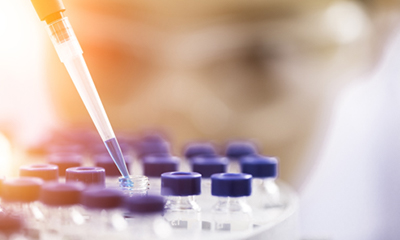
Genomic medicine
We are working to realize effective personalized medicine for cancer with minimal side effects by identifying causal relationships between human genome information and drug effects. Using the supercomputer Fugaku, Tokyo Medical and Dental University and Fujitsu analyzed the large-scale graph structure of all 20,000 human genes. Using Fujitsu’s Discovery AI technology, we have succeeded in visualizing the causal relationship between genes and the drug resistance of anti-cancer drugs. We continue our efforts to analyze information of all 3 billion human genomes.
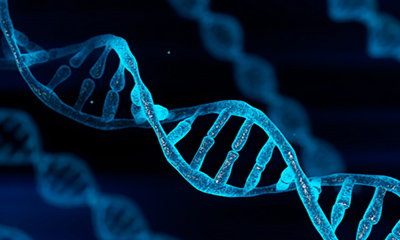
Material informatics
To overcome our difficult environmental challenges, we have to develop new materials, such as new catalysts for artificial photosynthesis and for synthesizing ammonia and hydrogen production. These are possible next-generation energy sources. Fujitsu is contributing to new materials innovation by combining our Discovery AI technology with ultra-scale computing power. For example, Fujitsu is collaborating with Atmonia, an Icelandic startup, to accelerate the discovery process of a new catalyst to synthesize clean ammonia.
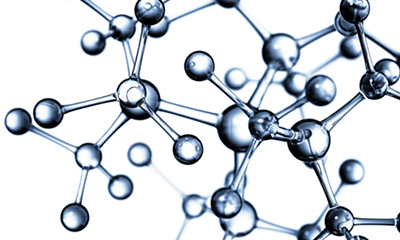
4. Trust in Everything
Cyber attacks are intensifying, targeting not only data and IT systems, but also physical social infrastructure such as energy networks. Meanwhile, people are increasingly concerned about the proliferation of fake news and untrustworthy data, as well as invasions of privacy.
The loss of trust in technology also poses a major challenge. People are worried that AI technology may produce biased judgements. We are entering an era of zero trust, where there is no place left in the world with absolute peace of mind. As a result, we are forced to doubt everything.
We used to focus on protecting the boundaries of organizations. In a borderless world, however, we have to ensure trust of people, data, systems and devices that are connected to the network.
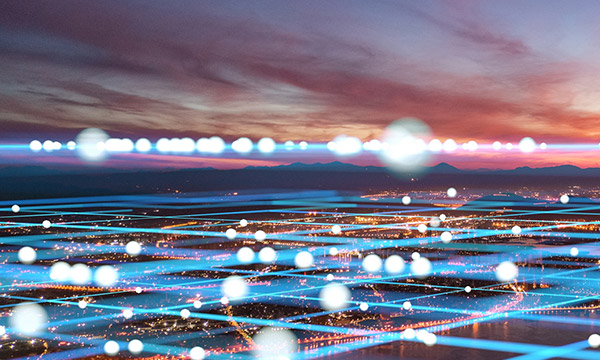
Trust in a borderless world
What is trust? We live in an increasingly complex society with diverse populations. If you do not have trust, it is hard to truly feel safe. Trust is a mechanism that reduces the complexity of society. Industrial structures used to be fixed vertically. Today these are rapidly changing to open, distributed network structures, such as new mobility services, an API economy across finance and retail, as well as distributed power networks. As physical and digital experiences converge in a borderless world, the complexity of society will continue to grow.
Traditional, centralized organizational trust alone is unable to cope with this increasing complexity. To protect a borderless world, autonomous distributed trust technology becomes essential. We need to ensure the trust of everything connected to the network across both the physical and digital spaces.
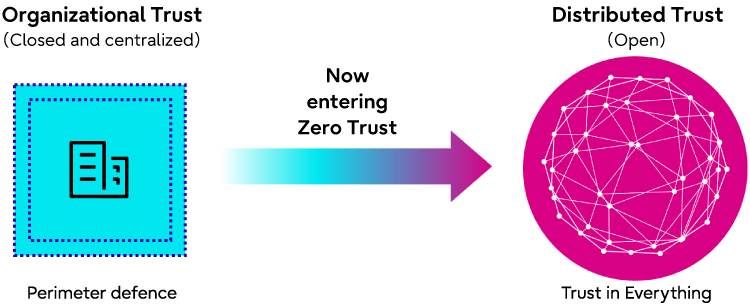
Distributed trust
While the borderless world empowers people to realize a society where no one is left behind, it also poses significant challenges. How can you trust people you meet in a digital space like the metaverse? Photos and videos can be easily created using AI technology. Your private data might be processed anywhere in the world. How do you know that money you receive has not been previously laundered from elsewhere? How can you verify the authenticity of the data and assets you are exchanging?
Distributed trust technology is becoming essential to overcome these challenges. Fujitsu has been providing identity and privacy-related technologies, including decentralized ID, multi-biometric authentication and privacy protection. In addition, we are focused on developing data trust technologies that ensure the authenticity of data to facilitate data exchange. We are also strengthening the security of the networks and AI systems that underpin our social infrastructure, while developing trust technology that ensures access to people, systems and devices across physical and digital spaces.
As sustainability becomes a global imperative, intangible, non-financial value such as environmental value is holding greater weight for both business and society. We are now working on technologies that connect multiple blockchains and allow the free flow through of tokens, enabling end-to-end traceability across connected ecosystems.
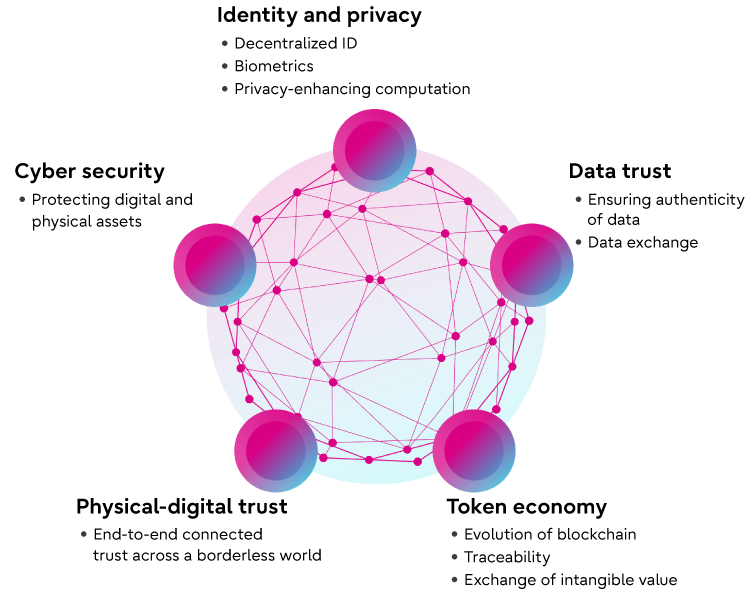
Rebuilding trust
Identity innovation
In contrast to the prevalent centralized identify management by specific digital services, new decentralized identity management technology is now attracting greater interest.
Fujitsu has developed a self-sovereign and decentralized digital identity exchange technology as a key enabler of the borderless world. We are now working with various partners to explore practical applications of this exciting technology.

Data exchange
As digitalization progresses, there is a growing need to verify the authenticity governmental and industrial data transparently. Fujitsu has developed Transparent Trust Transfer technology that prevents tampering of business data exchanged between private and public organizations, ensuring their authenticity. Together with our partners, Fujitsu is actively promoting Trust as a Service based on this technology.
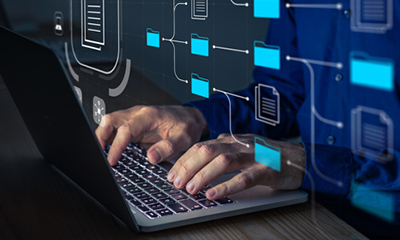
Regenerative society
Stakeholders are becoming increasingly interested in how organizations reduce their CO₂ emissions, ensure human rights and procure materials responsibly throughout their end-to-end value chains. It is becoming very important to verify, tokenize and distribute such non-financial information throughout society. Fujitsu is now using blockchain technology to enable organizations to build traceability across their global supply chains and transparent trading platforms for both rice and water, helping to create a truly regenerative society.

Creating sustainable value
Key digital technologies need to be integrated in order to drive Fujitsu's four future visions.
Fujitsu continues to seamlessly merge computing and network technologies, giving many more people easy access to ultra-scale computing power. Using this next-generation technology infrastructure, we are helping to accelerate the discovery of new knowledge by allowing people and AI work together creatively. We are also converging digital technologies with humanities and social sciences to enable the dynamic simulation of cities and society. Finally, we are helping to introduce distributed trust across network, ensuring the required levels of trust throughout the borderless world.
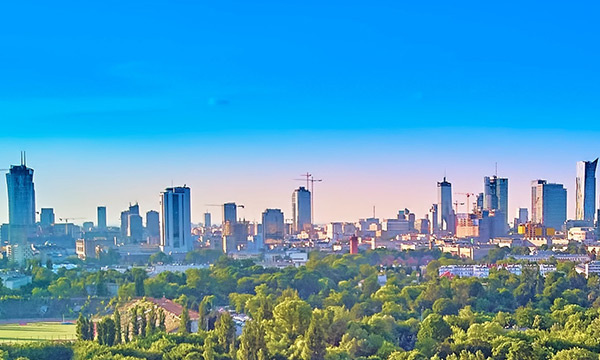
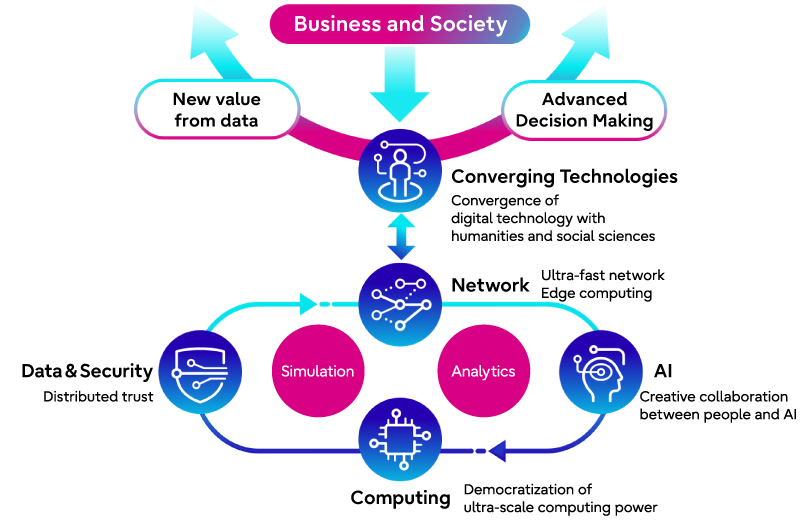
Fujitsu’s cutting-edge technologies
Fujitsu focuses its resources on five technology areas, engaging in open collaboration with partners, academics and research institutes around the world. To drive a better future for all, we are now exploiting these technologies to help organizations transform their business processes and deliver greater sustainability value.
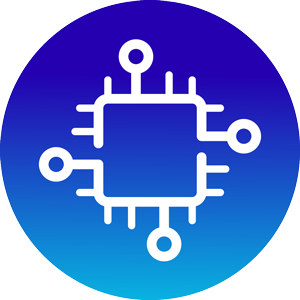
- High Performance Computing
- Digital Annealer, a quantum inspired computer
- Quantum computer
- Quantum simulator
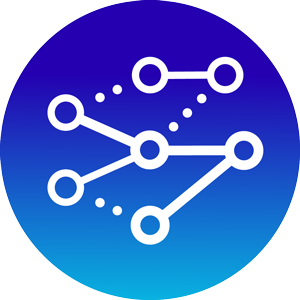
- 5G Open RAN with cloud-native virtualized architecture
- Optical networks
- 6G technology
- Photonics-electronics convergence technology
- Optimization of networks by AI
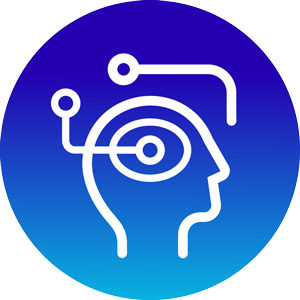
- Trusted AI technology including Explainable AI and Ethical AI
- Discovery AI to find causal inferences of large-scale data
- Automation of machine learning

- Multi-biometrics authentication
- Decentralized ID (IDYX)
- Connection chain technology to connect multiple blockchains
- Transparent trust transfer technology to ensure data authenticity
- AI Cybersecurity
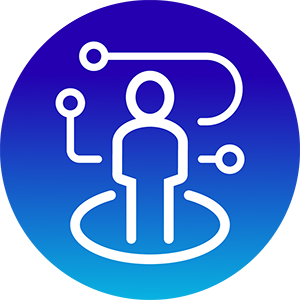
Technologies
- Real time dynamic digital twin infrastructure (Dracena)
- Social digital twin technology
- High-precision automatic sensing and recognition technology (Actlyzer)
Let's take a look at the specific transformation stories that have started moving towards these visions on the next page.

